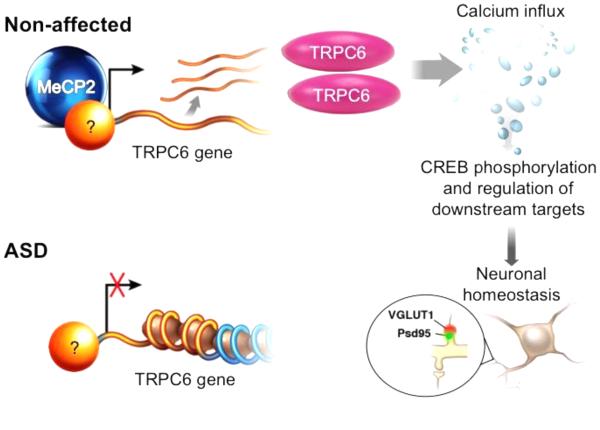Figure 1.
The use of iPSCs to model ASD has already revealed new biological insights. A recent ASD predisposition gene (TRPC6) was shown to contribute to the formation of glutamatergic synapses in human neurons. Interestingly, TRPC6 gene expression can be controlled by MeCP2, a gene implicated in Rett syndrome, revealing the shared molecular pathways between syndromic and non-syndromic autisms. In non-affected individuals, MeCP2 is part of a currently uncharacterized activator complex in cortical neurons, stimulating the expression of TRPC6 that promotes calcium influx. The downstream activation pathway involves CREB-targets that regulate neuronal homeostasis, including the establishment of excitatory neurons. In a subset of idiopathic ASD individuals, TRPC6 is downregulated due to a reduced level of MeCP2 or mutations in the TRPC6 allele.

